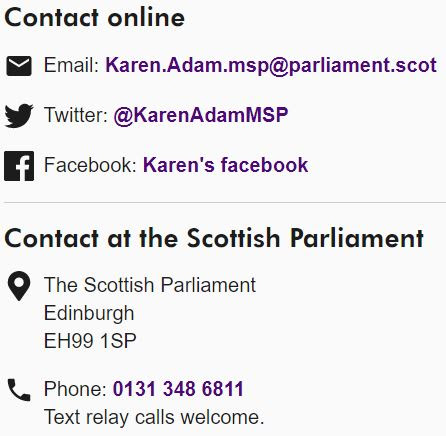The laying of the regulations demonstrates ongoing work in meeting the challenges and opportunities posed by climate change.
Stewart Stevenson, Minister for Climate Change, said:
"The advice from the Committee on Climate Change, the independent body established to advise government on setting carbon reduction targets, considers issues of both great importance and complexity and it was important that the Scottish Government had sufficient time to reflect upon it. We know that the challenge required to deliver our ambitious targets is a serious one. Everyone from Government, business, industry and individuals will need to play their part in helping to ensure that Scotland is at the forefront of a low carbon economy.
"Naturally, we will continue our efforts to influence the EU and international community to increase their ambition. We will continue to do that directly, through our work with the Climate Group's States and Regions Alliance, and closer to home, with our partners in the UK Government."
Under the terms of the Act, Ministers were allowed to vary by order the interim target of a 42 per cent reduction in emissions based on expert advice from the Committee on Climate Change. The Committee on Climate Change has confirmed that the 42 per cent target represents an appropriate contribution to global emissions reductions in 2020 and would put Scotland on the path to meeting the target of an 80 per cent reduction by 2050. On that basis, Scottish Ministers will retain the ambitious 42 per cent target.
Progress on the target will be mapped by a series of annual targets, with the first batch, covering the period 2010-2022, having to be set by June 1 this year. The targets in the draft order laid today are set at the levels suggested by the Committee on Climate Change with the exception of those for 2011 and 2012. Rather than being set flat as the Committee on Climate Change had suggested, those targets will require that emissions fall by 0.5 per cent year-on-year. Annual targets to cover 2023-2027 must be set by October 31, 2011, and further batches set every five years thereafter.
As part of the process, today - under the provisions of the Climate Change Act - four draft Scottish Statutory Instruments were laid in Parliament for approval. They cover:
- Setting annual targets for 2010-22
- Setting a limit on the use of carbon credits for 2010-12
- Allocating a share of international aviation and shipping emissions to Scotland
- Carbon accounting regulations which will set out the circumstances in which carbon credits can be used
"We know that legislation alone won't deliver the targets. It needs to be translated into real changes in everyday actions: by businesses; the public sector; voluntary and community groups and individuals. Better public understanding is essential if people are to be motivated to act.
"The Scottish Government, its agencies and its non-government partners will need to work together to explain what's needed and to incentivise action. Alongside that, action is needed to reduce the emissions from transport, housing, business, land management and other sources. The nation must also become better informed consumers. The public sector is a substantial purchaser in its own right and can encourage the development of greener goods and services. Scotland's schools, colleges and universities must also work alongside the business sector to increase public awareness and to research and develop innovative solutions and technologies.
"Reducing emissions by at least 80 per cent from 1990 levels over the next 40 years will require a radical change in the way in which society uses its energy and land. Some sectors will find it more difficult to reduce emissions by this extent without unacceptable changes in Scotland's social fabric or significant changes to consumer behaviour; that may mean other sectors will need to go further."
The Committee on Climate Change provided advice on the level of Scotland's targets and related matters on 24 February.
Ministers are also required to publish a report setting out how they will achieve emissions reductions. The report will be published in September. A public engagement strategy is currently being developed for publication by end of 2010.


 Born in 1946 and brought up in Cupar, Fife, I was educated at the local school -
Born in 1946 and brought up in Cupar, Fife, I was educated at the local school - 

















